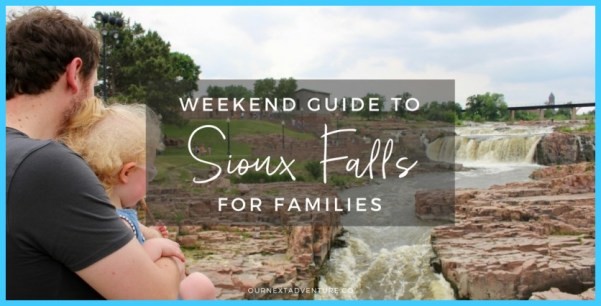
A survey by AAA (www.aaa.com) found 36% of adult travelers take a multi-generational trip each year. For more than 25% of travelers, these multi-generational trips will include three generations – travel will include their children and their parents or in-laws. Another 5% plan to travel with their grandparents, and 15% plan to take their grandchildren on vacation.
“Today’s grandparents are active and enjoy exploring the world. They value spending time with their children and grandchildren. In today’s fast-paced world, travel affords families an opportunity to spend quality time re-connecting and sharing experiences. The key to planning a successful multi-generational trip is making sure there is something for everyone to enjoy.”
AAA Travel Services
12.2 Characteristics of Family Travel
According to the U.S. Travel Association (USTA, www.ustravel.org), 24% of household trips include children under age 18. Of those trips which include children, 87% are for leisure, nearly half of which are taken to visit friends or relatives. About 43% of overnight trips with children include a hotel stay. The percentages of those on trips with children engaging in various activities are as follows:
• Shopping: 37%
• Outdoor activities: 21%
• Theme/amusement parks: 15%
• Historical places/museums: 14%
Kids’ programs are popular with family travelers; nearly 60% of family travelers use children’s services offered on the road. Special kids meals (41%) and hotel discounts (30%) are the most popular children’s services used, followed by video and other games (22%), supervised activities (13%), and baby-sitting (6%).
Children traveling alone on an airplane is not that unusual these days. Sixteen percent (16%) of parents have sent their child (or children) under 18 alone on an airplane trip.
Twenty-two percent (22%) of parents who took a trip in the past year let their children miss school to be a part of the travel experience. Parents who have studied for or attained a masters degree are more likely to let their children miss school to travel. Thirty percent (30%) of traveling parents who took a child out of school in the past year have postgraduate education, compared to only 11% of parents who kept their children from school for traveling. Sixty-six percent (66%) of the travelers who have taken kids out of school have a head of household in the prime child-rearing years, 35-to-54 years old. Pure fun or entertainment prompted nearly one-half to include a child in a trip in the past year. This includes 20% who traveled to sightsee or for entertainment, plus 27% who traveled for other leisure purposes. Only 6% of traveling parents cited business reasons.
Family travelers are more likely than total U.S. travelers to be married (80%), have a college degree (49%), and to have a professional or managerial occupation (37%).
Family reunions and travel go hand-in-hand, according to a study by the USTA, which found 34% of U.S. adults have traveled to attend a family reunion in the past three years. This translates to nearly 72 million U.S. adults. In just the past year, 22% of U.S. adults took a trip to attend a family reunion. More than half of reunions are held in someone’s home (52%). City or town parks (12%) and national/state parks or forests (6%) are other popular locales for reunions. For half of family reunion travelers, family reunions occur with some frequency – at least once a year.
“Reunions are small conventions, and there isn’t a city in the country that isn’t trying to attract conventions.”
Edith Wagner, Editor Reunions Magazine
One appeal of family reunions for cities and towns is that they are typically held during the summer months, which generally is the slower convention and business travel season. While attendance at family reunions can range from a handful to more than 5,000, the average number of attendees typically falls between 75 and 100 people.
According to Ione D. Vargus, Ph.D., founder and chairwoman of the Family Reunion Institute at Temple University (www.temple.edu/fri/familyreunion/), convention and visitors bureaus have been courting family reunion business for the past decade. Convention and visitors bureaus throughout the country have dedicated staff serving family reunions. Informal as they may be, family reunions take substantial planning.
FAMILY TRAVEL GUIDE IN US Photo Gallery
Dr. Vargas sees family reunions continuing to grow.
The Philadelphia Convention and Visitors Bureau tracked five years of family reunions and found the events have represented $519 million worth of business for the city. Family reunions represent more than 20% of the bureau’s summer blogings in Philadelphia.
Family reunions have an estimated impact of more than $20 million on Atlanta and surrounding counties, according to the Atlanta Convention and Visitors Bureau. About 35% of the reunion attendees that come to Atlanta stay at four-star hotels. Total spending for many reunions falls between $10,000 and $15,000, mostly attributed to families combining a full-fledged vacation with the reunion.
Several Las Vegas hotels and casinos are increasingly courting family reunions. Caesars Palace and Flamingo, for instance, instituted a program called Total Experience that provides assistance to guests in planning itineraries for their family reunions. Guests who blog five rooms or more receive personal concierge service at no charge. The resort representative organizes outings for the family, makes restaurant reservations, blogs spa visits, and performs other duties. Other casino resorts including Excalibur, Luxor, and Station Casinos have developed similar programs.
Working adults are taking fewer extended trips now compared with a decade ago. Weekday trips are declining because of increasing difficulties people have getting away from work during the week. Weekend getaways are growing in appeal among working adults as a way to abandon the pressures of work to re-energize.
The American Travel Behavior Survey, conducted for Hotwire (www.hotwire.com) by The Harris Poll (www.theharrispoll.com), found that 21% of adults had taken a trip they felt obligated to take within the prior 12 months. Obligation trips include weddings, reunions, birthdays, and family visits on major holidays. Annual spending for obligation travel is estimated at $193 billion.
Maybe You Like Them Too
- The Best Places To Visit In North America For Christmas
- Faro Travel Guide: Map of Faro
- Mumbai Travel Guide For Tourists: Map Of Mumbai
- Travel to Budapest
- Thailand Travel Guide for Tourists: The Ultimate Thailand Map













